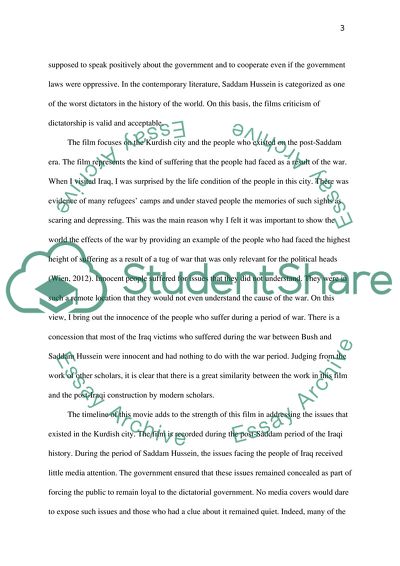Cite this document
(A Critical Evaluation of a Screening Event - The Kurdish Winter Movie Review - 1, n.d.)
A Critical Evaluation of a Screening Event - The Kurdish Winter Movie Review - 1. https://studentshare.org/visual-arts-film-studies/1818717-a-critical-evaluation-of-a-screening-event-the-kurdish-winter
A Critical Evaluation of a Screening Event - The Kurdish Winter Movie Review - 1. https://studentshare.org/visual-arts-film-studies/1818717-a-critical-evaluation-of-a-screening-event-the-kurdish-winter
(A Critical Evaluation of a Screening Event - The Kurdish Winter Movie Review - 1)
A Critical Evaluation of a Screening Event - The Kurdish Winter Movie Review - 1. https://studentshare.org/visual-arts-film-studies/1818717-a-critical-evaluation-of-a-screening-event-the-kurdish-winter.
A Critical Evaluation of a Screening Event - The Kurdish Winter Movie Review - 1. https://studentshare.org/visual-arts-film-studies/1818717-a-critical-evaluation-of-a-screening-event-the-kurdish-winter.
“A Critical Evaluation of a Screening Event - The Kurdish Winter Movie Review - 1”. https://studentshare.org/visual-arts-film-studies/1818717-a-critical-evaluation-of-a-screening-event-the-kurdish-winter.


